13 MLB players signed to a minor league contract having a major impact in 2017

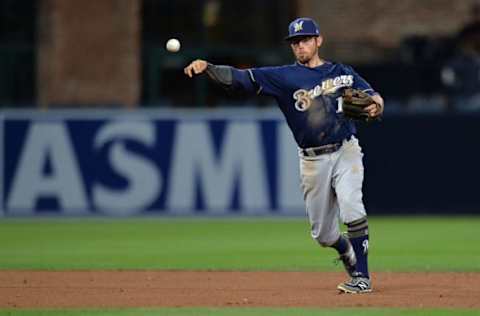
Every offseason a number of excellent MLB players are signed to minor league deals for a number of reasons. Who’s outperformed that minimal investment in 2017 so far?
While many MLB fans are tracking the big free agents in the offseason, there is often work done that flies under the radar where players who are on the cusp of the majors or have been MLB players in the past end up signing a minor league contract. Sometimes that’s due to a lack of interest from big league clubs after a poor previous season. Sometimes it’s due to a flooded market at their position. Sometimes it’s due to injury recovery. Whatever the reason, we’re going to take a look at the guys who signed a minor league deal this offseason and have performed well in MLB this year.
Eric Sogard, IF, Milwaukee Brewers
It’s not often that a player has a career renaissance at 31, enjoying a pace to put up his career-best bWAR, but that’s exactly what Sogard is doing.
Signed by the Brewers this offseason in December, Sogard was originally drafted by the San Diego Padres in the 2nd round of the 2007 draft. After a pair of seasons in the Padres system, he was traded to the Athletics as part of a four-player deal.
Sogard worked his way to a prominent role in the Athletics infield, putting up a solid season in 2013 as the primary second baseman and the primary utility infielder in 2014-2015 before blowing out his knee and missing the 2016 season after surgery.
Sogard has been a life saver for the Brewers this season. He has been the primary utility infielder until he recently took over second base for Jonathan Villar when he was injured.
On the season, Sogard has hit .352/.457/.528 with 10 doubles, 3 home runs, and 2 stolen bases with a 19/16 BB/K ratio. He’s played primarily second base, but he’s also played shortstop, third base, and left field.
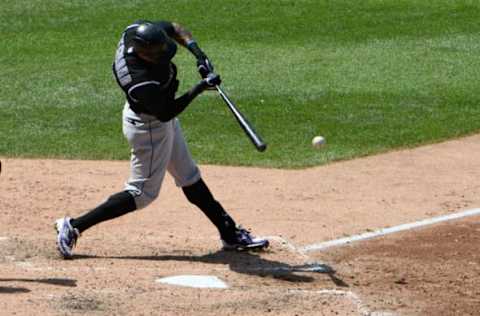
Mark Reynolds, 1B, Colorado Rockies
After a season as a part-time player where he had an .806 OPS, Reynolds was likely hoping to find a major league role as at least a platoon 1B/DH option for a team, but nothing materialized.
Instead, he accepted a minor league deal with the Rockies just before spring training, and it may have been the best decision he could have made in the free agent market anyway.
Reynolds is 33 years old and has been in the major leagues since 2007. He has been one of the most prolific power hitters over the last decade-plus, showing major power in his right-handed swing, but also a propensity to strike out at alarming rates, eclipsing the 200 strikeout mark in three straight seasons from 2008-2010, but also hitting 108 home runs in those three seasons as well.
Reynolds’ issues with the strikeout has led to him being a part-time player, called upon by teams to crush lefties, but being the short side of a platoon has meant that he hasn’t eclipsed 500 plate appearances since 2013.
In March, prospective first baseman for the Rockies, Ian Desmond, fractured his hand during a spring training game. Desmond was the Rockies’ big offseason signing, and his absence left a big hole in their lineup.
Reynolds has filled that hole very well, causing the move of Desmond into the outfield when he returned due to Reynolds playing so well. While Reynolds is still striking out at just over 25% of the time, he’s also walking 11.6% of the time, higher than he’s posted since 2012.
His overall numbers on the season are .301/.384/.558 with 18 home runs, anchoring the middle of the Colorado lineup.
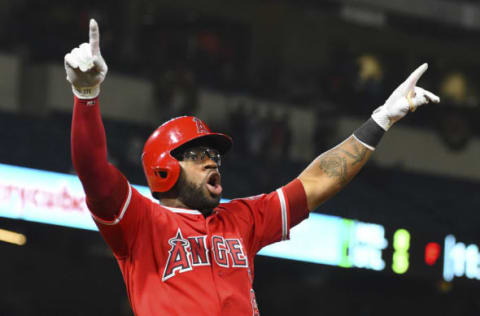
Eric Young, Jr., OF, Los Angeles Angels
Losing the best player on the planet is never a positive thing, but when the Angels lost Mike Trout for multiple months after injuring himself on a slide, the team looked to Young to help their outfield.
Young has been a “one tool” player most of his career, with legit 80-grade speed early in his career, which is still plus to double-plus raw speed. However, Young really didn’t have any other offensive skills to keep him on the field, never eclipsing a .450 slugging percentage in his career.
Young was never really entrusted with a full time job other than 2013, when the Rockies traded him to the Mets, and Young finished the year hitting .249/.310/.336 with 27 doubles, 7 triples, 2 home runs, and 46 stolen bases along with a 46/100 BB/K ratio.
He’s bounced around baseball since, primarily as quad-A fodder, filling a AAA roster and bouncing to the majors if a glut of injuries required such. When the Angels signed Young in January of this offseason, they became his 5th organization since opening day of 2015.
When Trout went down, Young seemingly stepped right into his shoes. He’s hit .290/.380/.464 with 3 home runs and 6 steals in 22 games.

Daniel Nava, OF, Philadelphia Phillies
Already a late bloomer, Nava was a good story when he initially worked his way to the majors in 2010 at 27 after being signed out of independent league ball a in 2008. He enjoyed a few more seasons as a platoon and bench outfielder with the Red Sox before they placed him on waivers in August of 2015.
Since then, Nava has been with three organizations, never really finding a home to get himself back to the major leagues for any extended time.
Nava enjoyed his best season in 2013, hitting .303/.385/.445 with 29 doubles and 22 home runs over 134 games with Boston, but that was his only slugging percentage over .400 in any season coming into this year.
The Phillies took a chance this winter and signed Nava to a minor league contract. When injuries and ineffectiveness left a hole in their outfield, Nava came up and has been playing very effectively ever since. He’s still not hitting for a ton of power, but he’s currently sporting a .277/.389/.415 line, and unlike much of the Phillies lineup that struggles with swing-and-miss, Nava has posted a 16/20 BB/K ratio in his time, even flashing excellent defensive skills in left field, with 3 outfield assists in just 22 games.

Matt Albers, RP, Washington Nationals
Matt Albers is not exactly a name that strikes fear in the hearts of MLB batters, but he has been one of the only successful relievers in the Washington Nationals bullpen this season.
Albers was originally a 23rd round draft pick out of high school in Texas. He worked his way up the Astros system, reaching the majors initially in 2006 for a brief call up before getting a chance to spend a full season with the Astros in 2007 as a swingman, making 18 starts in 31 games, throwing 110 2/3 innings, though they weren’t good production innings.
Albers was traded that offseason, and his heavy sinker began a whirlwind tour of the league, with the Nationals being his seventh organization when he signed with them this spring.
This season, Albers ended his pursuit of one of the least known records in baseball, the most games finished without a save. Albers and Ryan Webb were far and away in the lead, though they were near each other in total games finished. When Albers closed out a game on May 5th of this season, he picked up his first career save after over 100 games finished.
On the season, Albers, who has a career 4.28 ERA and 1.42 WHIP, has posted a 2.03 ERA and 0.83 WHIP over 26 2/3 innings. He’s saved two games and posted a 6/33 BB/K ratio.

Anthony Swarzak, RP, Chicago White Sox
When the Twins drafted Swarzak in 2004 out of high school in Florida, they imagined that he’d someday turn into either a front line starter or dominating reliever. He’s finally come into that role with the White Sox this season.
Swarzak worked his way to the Twins by 2009, making 12 starts in that season, but posting a 6.25 ERA. He returned to AAA and struggled just as much in AAA in 2010 before working his way to the Twins again in 2011. He moved to the bullpen full time in 2012.
Before this season, his best year was 2013, when he made 48 appearances for the Twins, posting a 2.91 ERA, 1.16 WHIP, and a 22/69 BB/K over 96 relief innings. He left the Twins as a free agent after 2014, and he’s struggled with injury to stay on the field the last two seasons with the Indians and Yankees.
Don Cooper and the White Sox liked what they saw in Swarzak, thinking they could turn him into a solid reliever when they signed him in January 2017. He made the opening day bullpen, and he’s made 28 appearances, throwing 33 innings, with a 3.00 ERA, 1.09 WHIP, and 10/30 BB/K ratio.
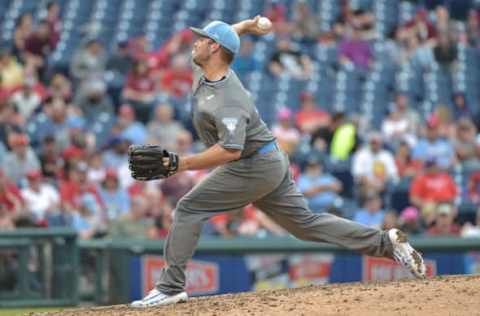
Jorge De La Rosa, J.J. Hoover, T.J. McFarland, Tom Wilhelmsen, RP, Arizona Diamondbacks
With Fernando Rodney at closer, the Diamondbacks pieced together a relief corps this offseason by signing minor league contracts with guys rather than going heavy after the big relief names. It’s turned out to work very well for the team, building a deep and quality bullpen.
De La Rosa is known more as a starter, spending nearly a decade as one of the few starters who could tame Colorado’s thin air, but he’d struggled with injuries, and the Diamondbacks signed him knowing he’d move to the bullpen. De La Rosa has taken well to the role. He has made 28 appearances, with a 4.01 ERA, 1.38 WHIP, and 13/22 BB/K ratio as a guy primarily used against tough lefties.
Hoover spent four seasons in the Cincinnati bullpen, posting a 3.34 ERA, 1.19 WHIP, and 9.1 K/9 from 2012 through 2015. Then an injury riddled 2016 produced a 13.50 ERA over 18 appearances. The Diamondbacks took a chance on Hoover this offseason, and he has shown to be a quality investment, with strikeout stuff, posting a 4.24 ERA, but striking out 31.3% of hitters.
Originally plucked from the Indians system by the Orioles in the Rule 5 draft to make his major league debut, McFarland bounced between AAA and MLB over the next few seasons, with 2013 the only season he didn’t spend some time in the minor leagues. The Diamondbacks opened McFarland in AAA, but once he got up to the major leagues, he has been excellent, with a 1.66 ERA and 1.02 WHIP over 21 2/3 innings.
Wilhelmsen worked his way up the Mariners minor league system in a hurry when the team moved him out of the bullpen, taking over as Seattle’s closer in his first year as a full-time reliever. He has shifted from closer to setup guy when he’s been on to completely unusable when he’s not on. After a tough season with Texas, he finished the year well in 2016 back in the Mariners organization. The Diamondbacks haven’t seen big numbers from Wilhelmsen, with a 4.44 ERA and 1.41 WHIP, but he’s been consistent, especially against tough righties for the Diamondbacks bullpen.
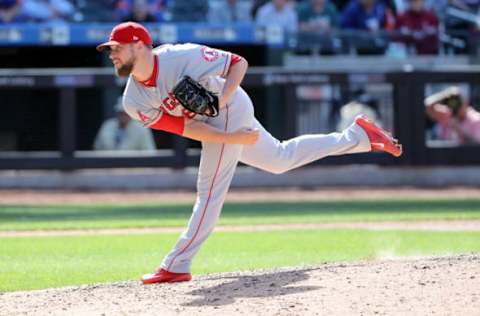
Bud Norris, David Hernandez, Yusmeiro Petit, RP, Los Angeles Angels
The money dedicated to the present contracts of Mike Trout and Albert Pujols along with money going toward guys no longer on the roster like Josh Hamilton has left the Angels with minimal cash to spend on the bullpen, so they’ve had to be creative in acquiring quality arms.
More from Call to the Pen
- Philadelphia Phillies, ready for a stretch run, bomb St. Louis Cardinals
- Philadelphia Phillies: The 4 players on the franchise’s Mount Rushmore
- Boston Red Sox fans should be upset over Mookie Betts’ comment
- Analyzing the Boston Red Sox trade for Dave Henderson and Spike Owen
- 2023 MLB postseason likely to have a strange look without Yankees, Red Sox, Cardinals
At least for 2017, no one has acquired them better, as the team experienced injuries to the two primary relievers on the team, Huston Street and Cam Bedrosian, and they’ve seen the key 8th and 9th inning roles filled well with guys who were originally minor league signees.
Bud Norris has been a very quality closer since being installed into the role after Bedrosian’s injury, but he was throwing well before then. In his first full season of his career as a reliever, the 32 year old Norris is enjoying what could be his first All Star season, posting a 2.43 ERA, 1.11 WHIP, 11 saves, and 13/42 BB/K ratio over 33 1/3 innings.
Interestingly, the Angels weren’t the original team that signed David Hernandez to a minor league deal this offseason. In fact, they weren’t even the second. The San Francisco Giants signed Hernandez just ahead of spring training, but released him in late March. The Braves jumped on him, signing him to a minor league deal. Hernandez opened in the Braves minor league system and was throwing well when he was traded to the Angels. On the season, he’s put up a 2.38 ERA, 0.97 WHIP, and 4/25 BB/K ratio over 22 2/3 innings for the Halos.
Petit has made a career out of being a swing man, pitching well as a fill in starter or long reliever. This season, the Angels have used him primarily as a set up man, pitching him before the 5th inning just once, and maxing his single game innings at 3 innings. On the year, he’s shown to be effective in that role, posting a 2.53 ERA over 42 2/3 innings with an 11/48 BB/K ratio.
Next: Draft Review For All 30 Teams
Is there anyone else you feel should have been on this list? Let us know in the comments!